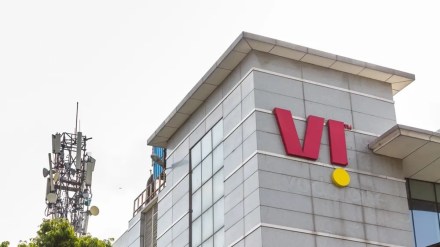Vodafone Idea’s recently announced partnership with AST SpaceMobile to deliver satellite-based direct-to-mobile (D2M) connectivity is likely to face regulatory and policy hurdles, making immediate rollout of the service highly unlikely.
According to analysts, unless the department of telecommunications (DoT) and the Telecom Regulatory Authority of India (Trai) initiate a separate consultation process to define spectrum sharing and leasing norms for hybrid satellite-terrestrial networks, the agreement will remain largely aspirational.
The tie-up, announced on June 18, is being seen as a breakthrough in satellite communication because it aims to deliver broadband connectivity directly to standard smartphones via space-based infrastructure. Unlike other satellite partnerships, such as Bharti Airtel and Jio’s deals with Starlink, which focus on fixed wireless access (FWA) terminals installed on rooftops, the Vodafone Idea-AST SpaceMobile collaboration seeks to eliminate the need for any special user equipment.
“This partnership is fundamentally different,” Parag Kar, telecom expert, and former VP of Qualcomm, said. “Unlike Starlink’s India approach with Bharti and Jio, which is about connecting rooftop terminals, the AST-Vodafone Idea plan is to deliver satellite signals straight to smartphones using Vodafone’s own 4G and 5G spectrum. But current rules simply do not allow that,” he said.
The model relies on AST SpaceMobile using Vodafone Idea’s existing telecom spectrum, such as in the 900 MHz, 1800 MHz, 2100 MHz, and 2500 MHz bands, to extend mobile coverage via satellite into remote regions where Vodafone lacks terrestrial coverage. However, this spectrum is currently licensed only for terrestrial use. Trai’s May 2025 recommendations do not provide any legal basis for leasing or sharing terrestrial spectrum with satellite operators. Instead, the regulator has recommended using higher frequency Ku, Ka, Q, and V bands for broadband and L and S bands for narrowband mobile services, all of which are distinct from IMT (telecom) bands.
“There are no regulatory provisions yet for leasing mobile spectrum to satellite players,” Kar said. “Even though Vodafone Idea owns spectrum in the S-band, it cannot share or lease it with AST Mobile without new policy guidelines from the DoT and Trai,” he added.
Further, there are technical barriers also. For instance, spectrum allocation model is based on circle-wise licensing rather than a pan-India basis. This means that even if AST SpaceMobile uses Vodafone’s spectrum in one telecom circle, it risks causing interference with another operator like Jio or Airtel using the same frequency in an adjacent circle. Border interference issues are especially acute in key bands like 900 MHz and 2100 MHz, Kar said.
In contrast, Bharti and Jio’s partnerships with Starlink are focused on fixed satellite services (FSS), which use high-frequency Ku and Ka bands to provide internet to dedicated rooftop terminals. These setups do not rely on telecom spectrum or smartphone-based access, which are supported by Trai policy framework. The model is far less complex and avoids the regulatory grey zones that D2M services are likely to encounter.
Vodafone Idea’s approach is inspired by AST’s tie-up with T-Mobile in the US, where the satellite provider uses the same terrestrial spectrum as T-Mobile to offer coverage in remote areas. But that agreement only moved forward after the Federal Communications Commission (FCC) in the US issued clear conditions allowing secondary use of T-Mobile’s spectrum without causing harmful interference to terrestrial networks.
For this to happen in India, a fresh consultation process to evolve spectrum sharing and leasing rules for hybrid satellite-terrestrial networks is required. This can only happen if DoT sends a reference to this effect to Trai.
